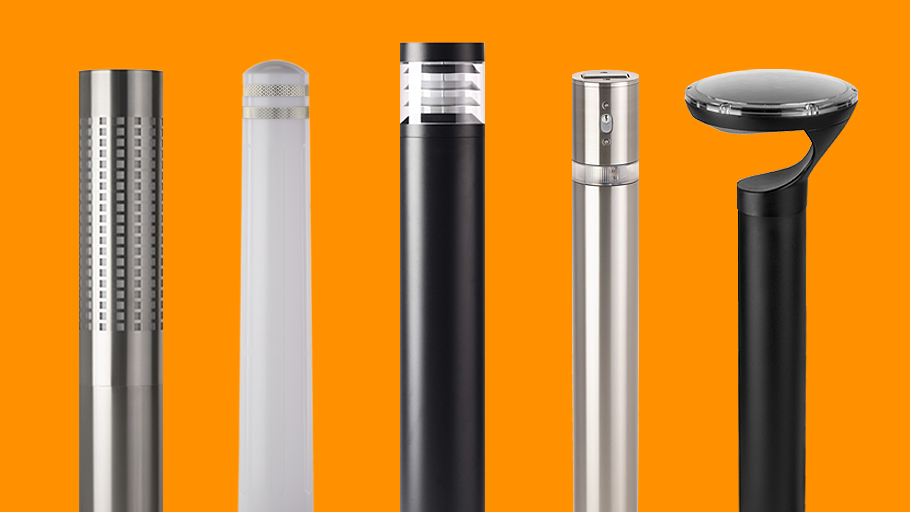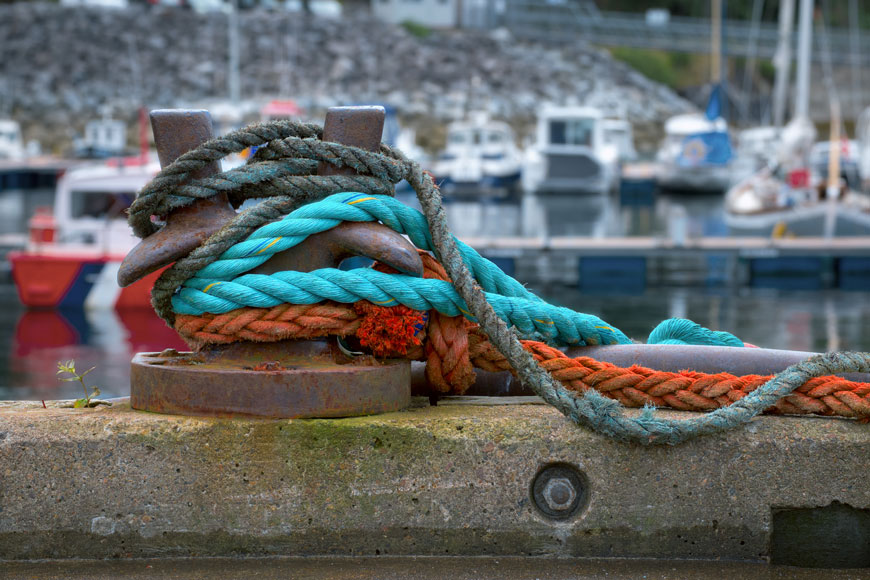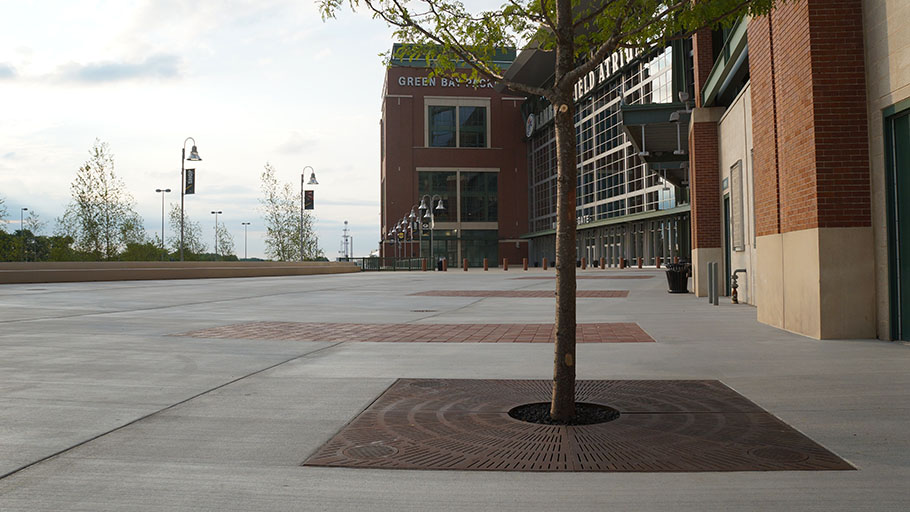Elevate your streetscape
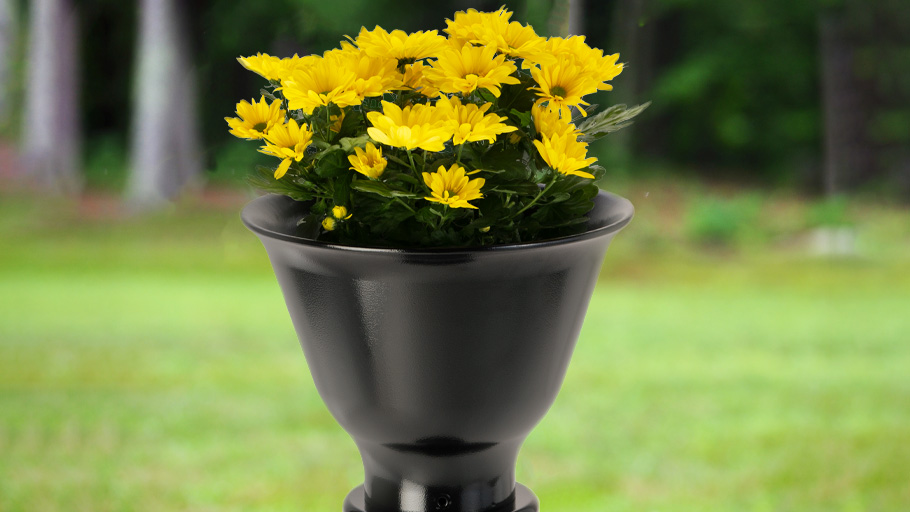
Introducing plant life to your outdoor space, whether that’s a commercial area, public plaza, or community space, can help create more vibrant, healthy, and sustainable urban areas. Incorporating greenery can help improve the air quality by absorbing carbon dioxide, provide habitats for wildlife, and contribute to the preservation of the bee population. Moreover, it can also enhance the look and feel of your space and provide visitors a way to connect with nature. Planter bollards offer a practical solution to adding plants to your site, particularly if space is a concern. However, there are several factors to consider when choosing which plants to use in your planter bollards.
Optimize Plant Size
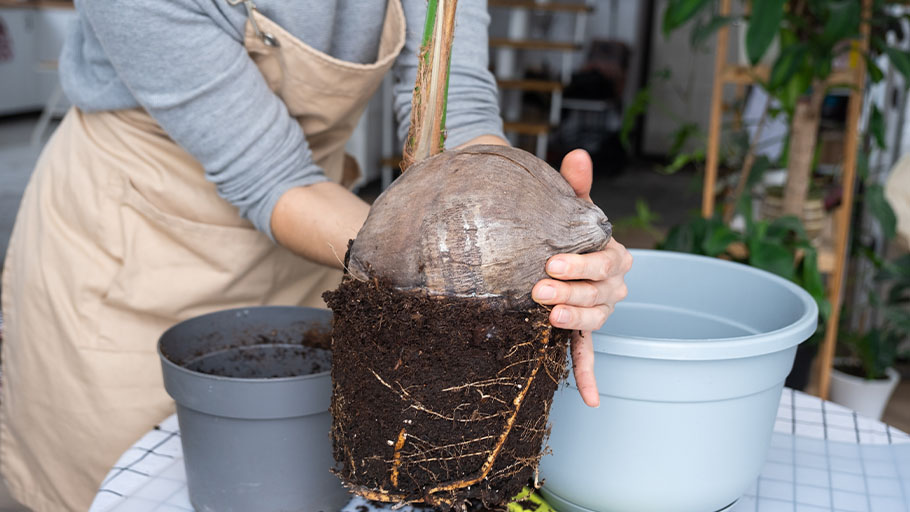
Like any planter, planter bollards have a limited amount of space to accommodate plants. In order to ensure that plants thrive, sufficient space is needed for their roots to grow. However, when it comes to planter bollards, there is more to consider than just the space below. As these bollards serve a dual purpose of keeping vehicles out and attracting visitors to certain areas, it’s important to keep in mind the height and width of the plant to avoid obstructing pedestrian access. Size is not only a functional consideration, but also an aesthetic one. The plant’s mature form should complement the size and design of the bollard and planter that holds it.
Drainage Requirements for Sustainable Greenspaces

Every plant has its own optimal watering schedule, but not all the water you provide a plant is consumed right away. The soil absorbs the water and then the roots of the plant take up nutrients and water from the soil as needed. With indoor plants, controlling the saturation of the soil is much easier as they have a single, controlled water source. Outdoor plants that are exposed to the elements, particularly in the rainy season, are more likely to experience over-watering, which can lead to root rot and other diseases. Planter bollards, installed correctly, allow excess water to be drained from the surrounding soil which helps to prevent the plants from being starved from oxygen. While having adequate drainage will help to prevent over-watering, your choice of plants can have an impact as well. There are many varieties of plants that have less stringent watering schedules. Plants such as lily of the valley, as well as certain grasses, like cordgrass, have a much higher tolerance for moisture. Conversely, if you live in a drought-prone region, choosing hardy succulents or drought resistant species such as lavender can drastically cut down on watering frequency, conserving water and saving on maintenance costs.
Caring for Greenery
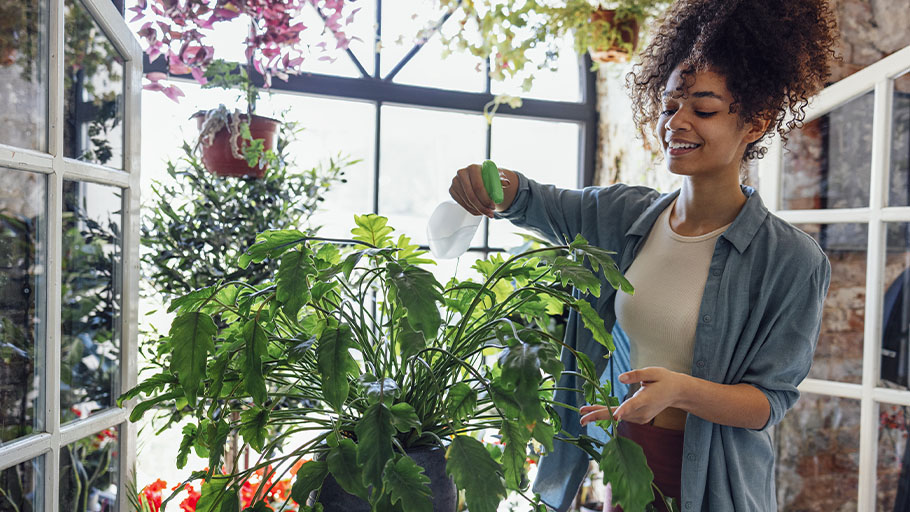
Tending to plants in a home garden is likely manageable if you enjoy gardening. In contrast, maintaining plants in public spaces, especially those operated by municipalities, can be challenging as they may have multiple locations to maintain, each with many planter bollards and many other maintenance activities to take care of. Each plant has unique care requirements, and while some activities, such as fertilizing, can be simplified by using nutrient-rich soil, others, such as pruning, and trimming are unavoidable when you need to maintain a clear, and safe pathway for visitors. Choosing plants that grow up instead of out, such as tall grasses, or no-prune shrubs like the Yuki Cherry Blossom, can significantly reduce trimming frequency. Pest control is another crucial consideration. While beneficial insects, such as bees, may be intentionally attracted, there are many destructive pests that can damage or kill plants. Rather than resorting to harmful pesticides, you can plant pest repellent species such as lavender, mums, or marigolds in the vicinity of less-resistant plants to help ward off destructive insects and reduce maintenance costs.
Functional Benefits of Plant Life
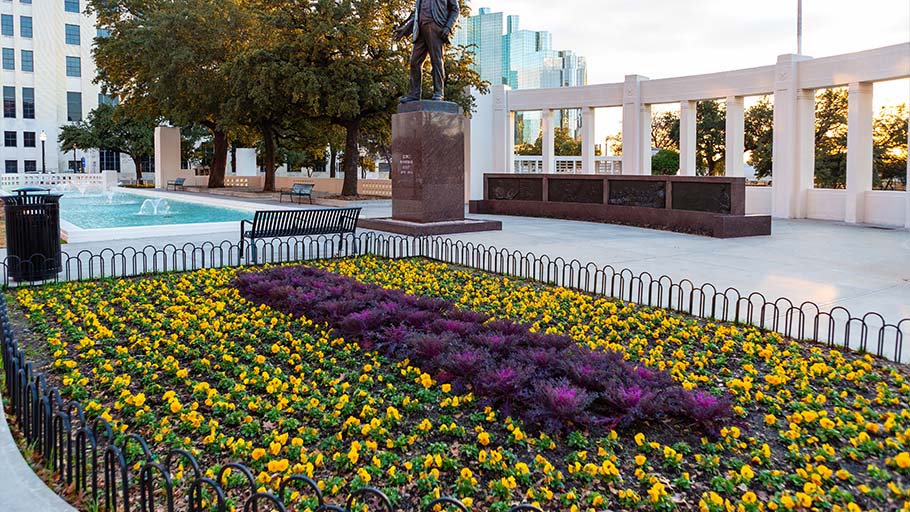
There are functional benefits to consider when choosing which varieties of to use in your planter bollards. Color may be your primary concern if you’re seeking to enhance the visual appeal of the area, it’s worth considering some of the functional advantages that plants offer. While you aren’t likely to plant a community vegetable garden across a row of bollards, you may be looking to contribute to the conservation of the bee population, which is rapidly declining. Alternatively, you might be looking to contribute to the reduction in greenhouse gases. For the former, you want to look for flowers with a high pollen content, preferably of the local variety. For the latter, it’s critical to select plant species that have a higher carbon dioxide absorption rate. By choosing plants that fulfil a variety of purposes, you can create a beautiful and eco-friendly space that supports biodiversity, contributes to environmental sustainability, and attracts and retains visitors.
Perennials or Annuals
Perennial and annual plants have different life cycles and characteristics, which have an impact on nearly every other consideration in the list. It’s best to choose your plants based on your specific needs while using the pros and cons listed below as a reference.
Perennials
PROS
CONS
- Longevity. Perennials live for multiple seasons when maintained properly, which avoids yearly replanting.
- Many perennials require less watering and fertilization once they have been established.
- Perennials often require multiple seasons of growth to reach their full size and flowering potential. They might not have the visual impact you desire for some time.
- Shorter bloom time. Many perennials have a shorter blooming season so they may not provide as much continuous color for your space.
Annuals
PROS
CONS
- Annual plants have a lot of work to do in a short amount of time. They grow and flower quickly, having a much faster impact on the landscape.
- Most annual plants have a much longer bloom period, providing continuous color to your space throughout the growing season.
- Annual plants die at the end of the season and will need to be replanted every year, adding to maintenance costs.
- Annual plants require more frequent watering and fertilization due to their rapid growth.
- Because annuals are seasonal, they provide less environmental benefit and may leave spaces feeling empty during the off-season.

